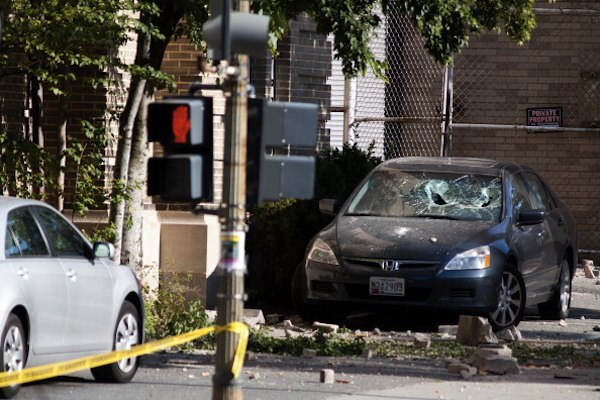5 Reasons Why the East Coast Earthquake Matters To You

On Tuesday afternoon the largest earthquake to hit the East Coast since 1944 shook a few miles outside a small town in Virginia. The 5.8 magnitude temblor was felt in nearby Washington D.C. and as far as New York City. Only minor damage and injuries were reported, but every quake is a reminder to make sure you are prepared for emergencies, even if you do not live in California.
As the go-to expert on natural hazards, Lucy Jones is often the first face and voice explaining what happened on TV and the radio in the moments, hours and days following earthquakes locally and around the globe. For almost 30 years, she's been a seismologist with the U.S. Geological Survey based in Pasadena, Calif., and most recently assumed the position of Chief Scientist of the Multi-Hazard Project in Southern California.
Like our conversation with her about the ARkstorm (California's other "big one"), we asked Jones to share a handful of reasons why the Virginia quake is a wake-up call for everyone nationwide. Her answers below:
1. Earthquakes can happen anywhere.
Although we think of earthquakes as a California problem, in fact, earthquakes are a national problem. You need a big fault to produce a big earthquake; faults large enough to give a magnitude 6 can be just about anywhere.
In fact, the National Seismic Hazard Map assumes that a magnitude 6 earthquake could happen anywhere in the country. Of course, these earthquakes happen more often in California. We get about one earthquake at least as large as the Virginia earthquake every year. The whole East Coast gets one this size about once per century.
2. The value of building codes.
Buildings were damaged in New York City, over 200 miles away from the location of the earthquake. Earthquake shaking travels more efficiently through the cold, hard rocks of the East Coast than through the California crust that is shattered by so many faults, but even so, the shaking level in New York was at a level that probably wouldn't affect any building in Los Angeles.
Our building codes have evolved over the years so that buildings built now are much more resilient than other structures and the structural losses in California earthquakes have been greatly reduced. However, building codes aren't retroactive, so your building is only as good as the code that was in place when your building was built. If your building was built before the 1971 San Fernando earthquake, it is much more like an East Coast building. If it was built before the 1933 Long Beach earthquake, there is no difference with an East Coast building.
3. Preparedness isn't only for earthquakes.
Virginians reasonably don't prepare for earthquakes. But a Virginia family that prepared for hurricanes by having a disaster kit and a family communication plan was probably much better off yesterday. Your earthquake communication plan may help you for something you can't imagine right now but is possible here, such as wild fire, flood, debris flow, or any number of natural hazards.

4. Economic impact reaches well beyond the shaking.
The business disruption costs on the East Coast were significant for one or two days. Just the time to inspect a building that wasn't damaged and to restore electricity is time spent not selling products and making money in a business.
Now imagine if the utilities are disrupted for weeks after a larger southern California earthquake. We know that a large earthquake on the San Andreas will disrupt goods movement across the entire U.S. due to the Cajon Pass transportation lines crossing the fault. (A good map of the impact of Southern California to the rest of the nation can be found here) A business continuity plan should be a fundamental tool of all California businesses. To learn more, see shakeout.org/scenario/.
5. We all live in the Urban Earth.
In the end, this earthquake reminds us that for all the buildings we build, roads we lay, and rivers we confine behind levees, we still live on an Earth we don't control. At the U.S. Geological Survey, earth scientists are working to better understand the physical processes that were producing earthquakes, volcanoes, floods and other disasters long before humans were here and will be continuing long past our time.
But a society that survives and thrives through hazardous events doesn't just need science. It needs to work together as a community to make safe what can be made safe and to know that it doesn't control the Earth.


